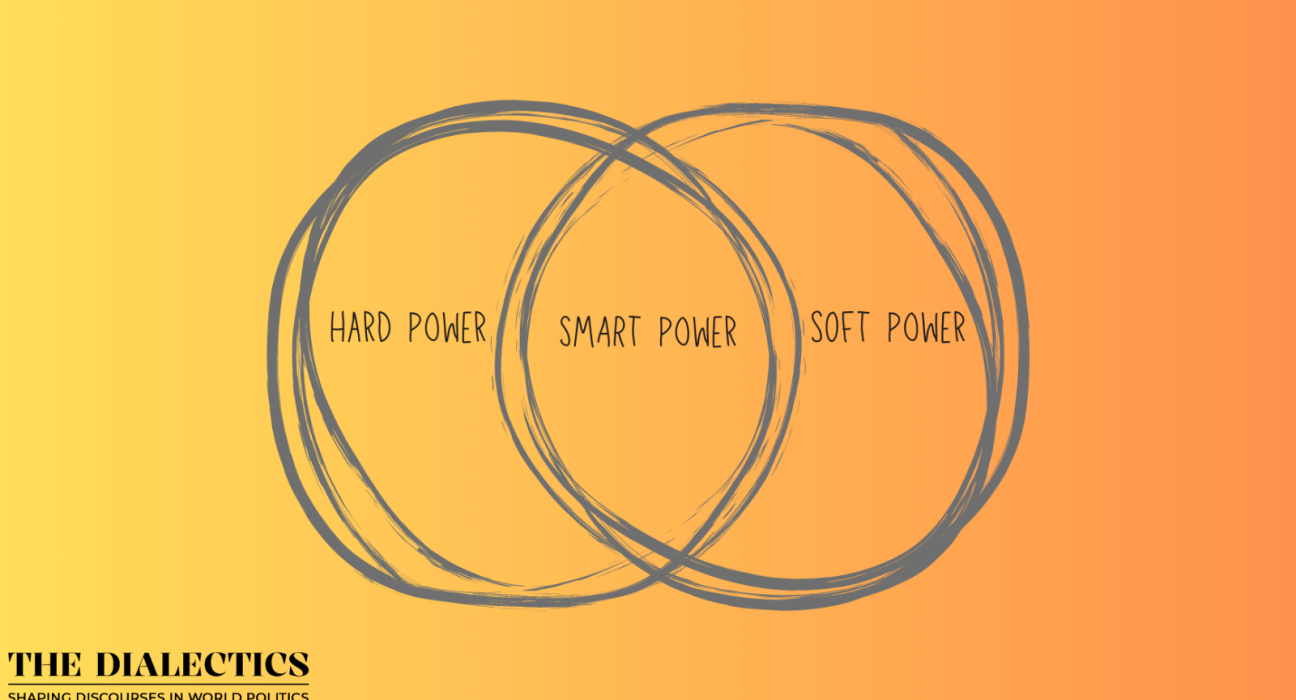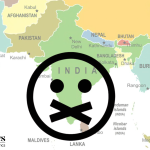India’s foreign policy framework experienced a major shift recently as it launched an unprecedented diplomatic outreach following Operation Sindoor, a calculated and precise kinetic response to Pakistan’s cross-border. Traditionally India’s action was significantly centered on hard power through military retaliation, Bharat has now pivoted towards a more panoramic approach that combines demonstrative cost imposition by force with a diplomatic stratagem. This shift is symbolic of what is called ‘smart power’ in the language of international relations – a blend of hard and soft power to achieve policy objectives and secure national interests.
This piece delves into the twin pillars of India’s evolving strategy in the aftermath of the Pahalgam terror attack: military retaliation and global narrative-building. It also explores the co-action between hard and soft power, examines the implications for India’s international image, and evaluates whether this marks a long-term shift in India’s national security and foreign policy doctrine.
The Battle of Narratives
India’s kinetic response was a precisely carried out operation targeting the terror infrastructure of UN-designated terror outfits without escalating into a full-blown war. This military response was calibrated to demonstrate India’s doctrine of responding firmly to any act of terrorism. However, as the nature of warfare experienced significant changes, wars or operations are now not just limited to the battlefield, the 21st century is the era characterised by the war of narratives. Countries around the world invest heavily in creating and addressing narratives that are thrown against their national interest by their adversaries. Hereby, comes the notion of soft power – coined by political scientist Joseph Nye, which is explained as ‘a country’s ability to influence others without resorting to coercive pressure’.
India’s Soft Power Foundations
Historically, India’s soft power rested on its rich civilizational heritage, cultural diplomacy, spiritual ethos, and democratic values. From the global propagation of yoga to Ayurveda, and the post-covid-19 vaccine diplomacy to humanitarian aid amid calamities and crises, India has been working on the part of soft power posturing over the years. After years of fighting terrorism on the field, India has realised the importance of setting out a narrative against threats to humanity like ‘Terror’, their sponsors, and sympathisers.
Diplomacy in Action
Unlike traditional diplomatic outreach, the Government of India’s decision to dispatch all-party parliamentary delegations to various countries instrumentally signalled a non-kinetic action. With leaders across parties conveying India’s post-Pahalgam action against terrorism, also exposing the face of terror-state Pakistan, not just sends signals to international audiences on the brutality of terrorism, but also exposes the various lies perpetrated by Pakistan portraying as an aggressor, as India battles the menace of cross-border terrorism since decades. India’s outreach did not rely on vague accusations; it was based on verified proof.
Smart Power in motion
India’s integration of Operation Sindoor’s hard power thrust with the expansive diplomatic engagement via visits of delegations exemplifies a sophisticated exercise of smart power. In the words of Joseph Nye, “Smart power is neither hard nor soft. It is both.”, as a result, India’s response to the Pahalgam terror attack reflects the very concept of smart power, with a deliberate synchronisation of military precision with the soft power assets of political unity, cultural resonance, and global diaspora leverage.
Road blocks to India’s Smart Power Approach
Despite its effectiveness from global perception management to multilateral pressure on Pakistan, there remain certain barriers that have to be taken into account.
- Firstly, the global hypocrisy, some countries still prioritise strategic ties with Pakistan, and then institutions like the IMF and the World Bank approve funds that certainly go to the accounts of terror breeders, rather than the people of Pakistan.
- Secondly, efforts are made by certain sections of international media outlets to paint the whole incident against India, consciously ignoring the entire point of the matter- that is terrorism and a state that openly uses terror as state policy. Yet, India is trying to demonstrate a pragmatic awareness of these challenges, positioning its soft power diplomacy as part of longer-term strategic statecraft rather than quick-fix messaging.
In conclusion, India’s deployment of all-party parliamentary delegations in the wake of Operation Sindoor manifests a profound shift in its soft power doctrine, transforming it from a cultural projection vehicle into a comprehensive strategic instrument fused with hard power elements.
This evolution reflects India’s strategic progression into a smart power dynamic—a mature state capable of combining the might of missiles with the persuasion of words to advance a robust, unified national narrative on the global stage with one voice roaring ‘ZERO TOLERANCE TO TERROR’. If this approach can be scaled and established, Pahalgam will be remembered not just as a site of tragedy but as the turning point in India’s march toward becoming a formidable smart power on the world stage.





